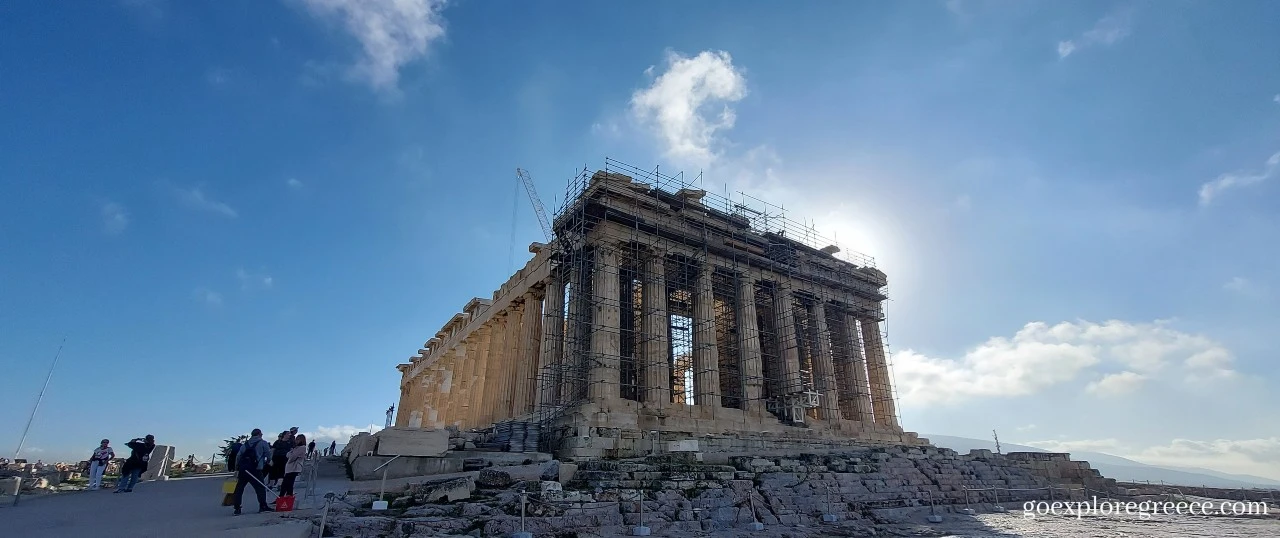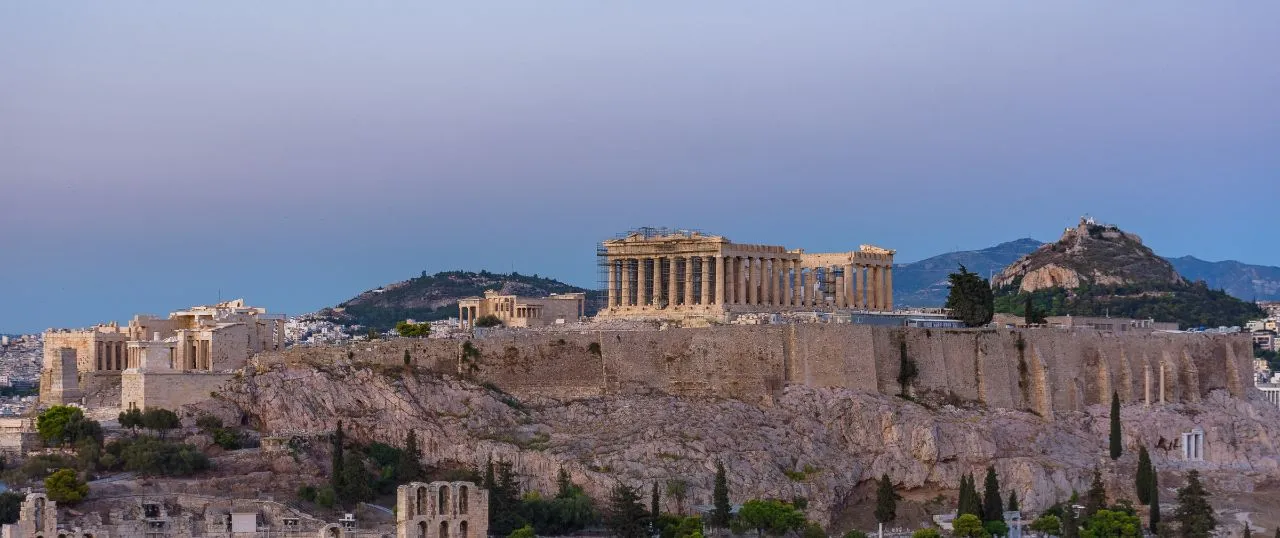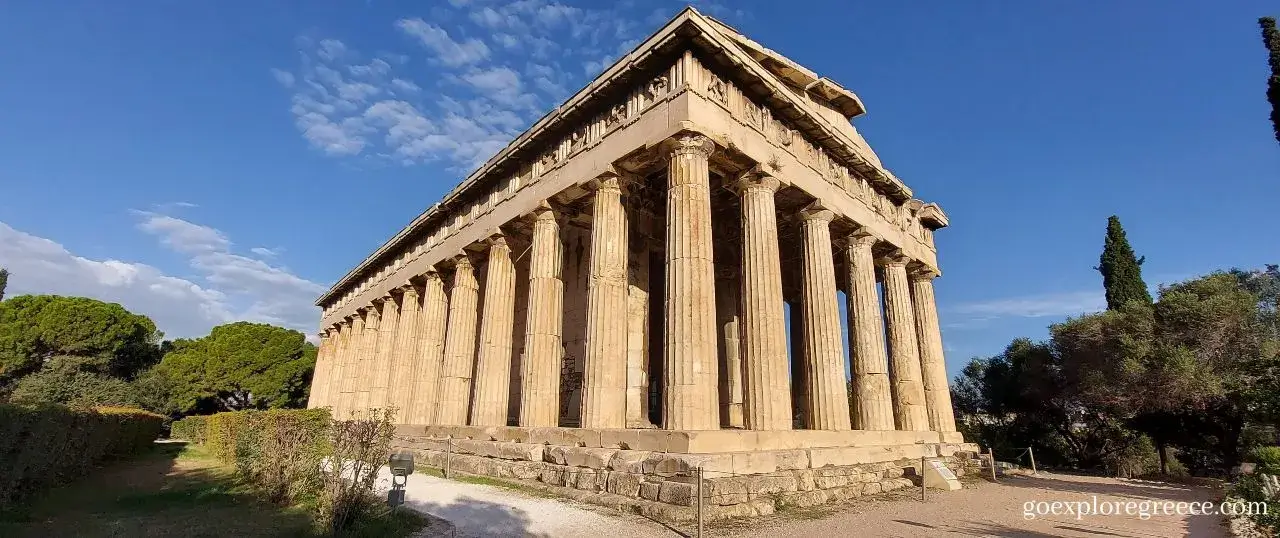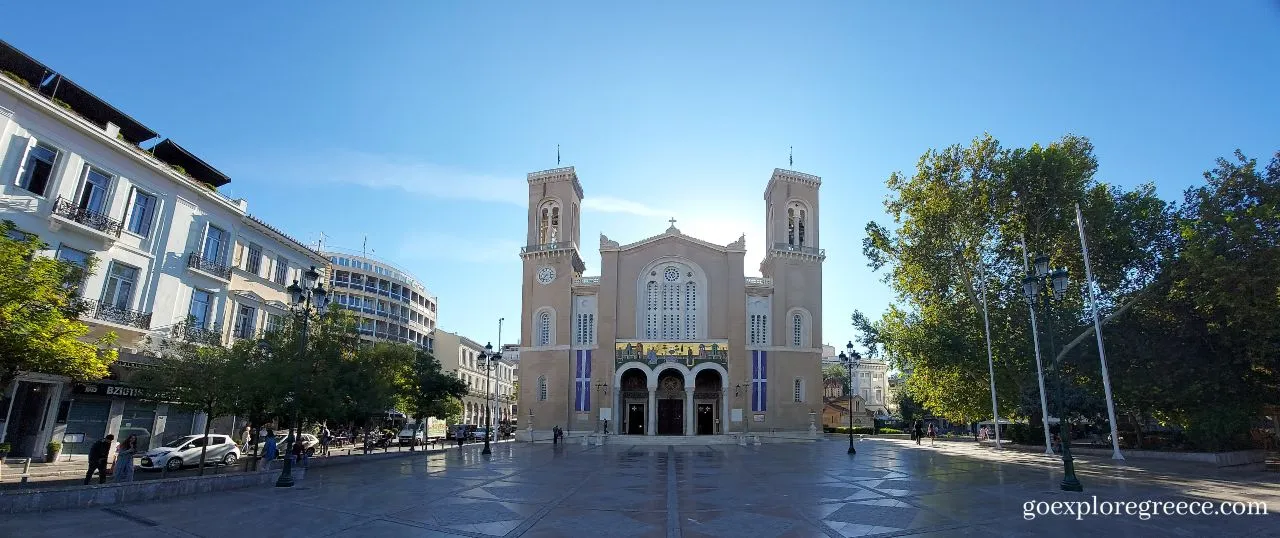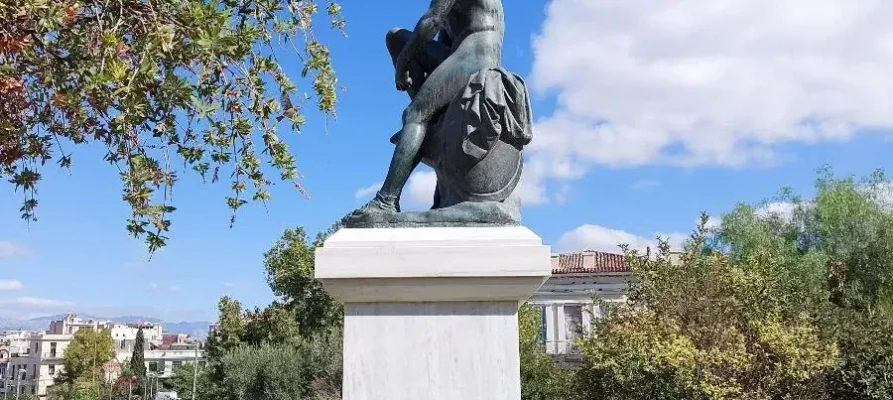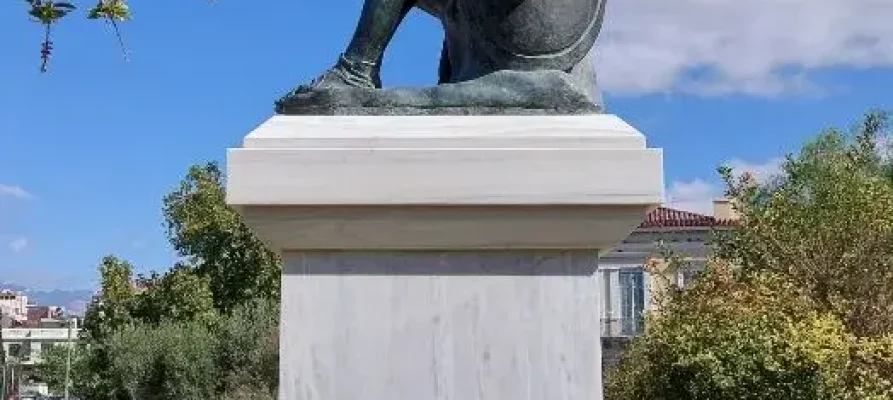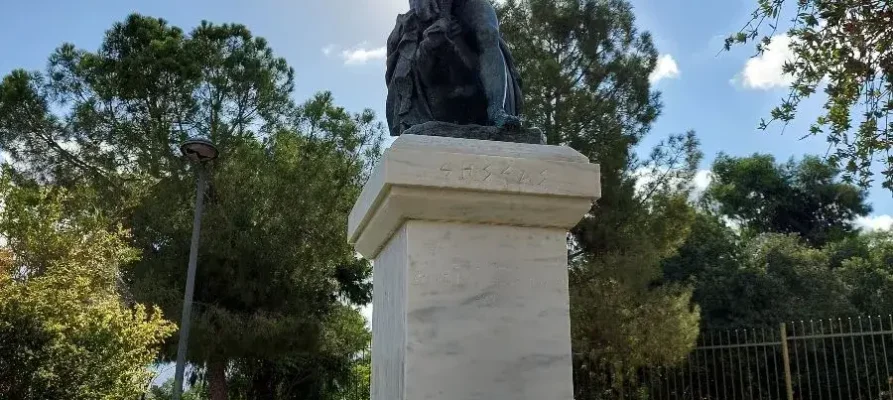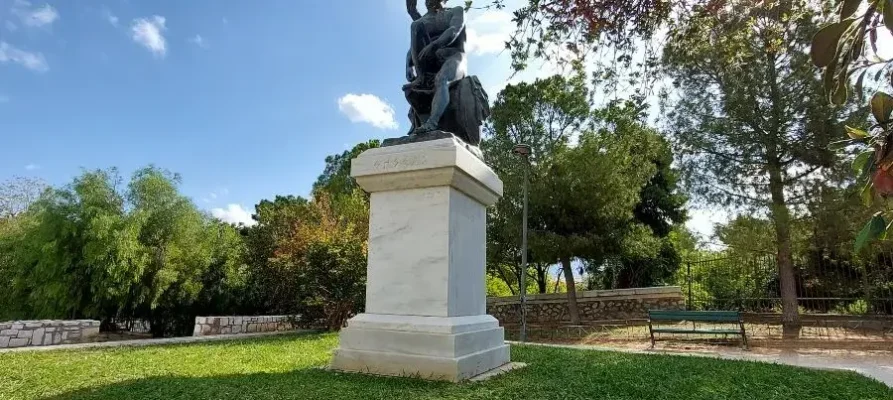Statue of Theseus
Statue of Theseus
Nestled in the charming Athens neighbourhood of Thissio and facing the Metro Station of the same name stands the iconic Statue of Theseus Athens. Just two minutes walk from the Ancient Agora of Athens, this magnificent statue pays tribute to the mythical king and founder-hero of Athens, Theseus, whose legendary stories have been immortalized in literature and art for centuries.
According to Greek mythology, Theseus was the son of Aegeus, King of Athens. He was sometimes believed to be the son of the god Poseidon. Theseus was renowned for his heroic feats. His most notable exploit was slaying the Minotaur, a fearsome monster with the body of a man and the head of a bull. His victory over the Minotaur led to the unification of Attica under Athenian rule and the establishment of the Synoikismos or “dwelling together.”
As the unifying king, Theseus was also credited with building a palace on the fortress of the Acropolis of Athens. Later, he established a cult of Aphrodite Pandemos or “Aphrodite of all the People” on the southern slope of the Acropolis, highlighting his role in shaping the cultural and historical landscape of Athens.
The Statue of Theseus Athens was created by the renowned sculptor George Vitalis in 1868. He presented it at the Olympia of 1870, and it quickly became one of the most significant works of modern Greek classicism of the 19th century. Vitalis, born in the village of Ysternia in Tinos in 1838, was the son of an experienced architect. At the age of fifteen, he accompanied his father to Smyrna, where he helped with the construction of neoclassical houses as a contractor.
Later, he moved to Athens, where he attended sculpture classes from 1857 to 1861 in the workshop of his cousin Georgios Fitalis, who was then a professor of sculpture at the School of Arts. Vitalis graduated as a probationary sculptor and continued his studies at the Academy of Munich under the tutelage of Max von Windmann with the urging of Queen Amalia and a scholarship from King Louis I of Bavaria.
Vitalis was an accomplished artist, receiving numerous accolades for his work, including the medal of Value from the Bavarian king during his studies. He passed away in Alexandria in 1901, leaving behind a legacy of artistic excellence and a masterpiece that continues to inspire and captivate visitors to Athens.
Visiting the Statue of Theseus in Athens is an opportunity to immerse yourself in Athens’s rich cultural and historical heritage. The statue is not just a testament to the ancient myths and legends surrounding Theseus but also a celebration of Athens’s artistic and cultural flourishing during the 19th century.
And, if you are interested in visiting other statues, I recommend these: Statue of Alexander the Great next to the Arch of Hadrian, the Ioannis Makriyiannis Statue near to the Acropolis Museum, and the Harry Truman Statue.
The good news is that the area around the Statue of Theseus in Thissio is generally accessible to visitors with disabilities and/or impairments.
The statue is located near the Thissio Metro Station, which is wheelchair accessible. Several ramps and sidewalks in the area make it easier to navigate with a wheelchair or mobility aid.
However, it’s worth noting that the statue is located on a raised platform, which may make it difficult for some visitors to get a close-up look. There is also some uneven terrain in the area, which could be challenging for visitors with mobility impairments.
If you have specific accessibility needs, it’s a good idea to contact the venue or the local tourism board in advance to inquire about any accommodations or assistance that may be available. They may be able to provide more detailed information about accessibility in the area and offer recommendations for accessible routes and attractions.

